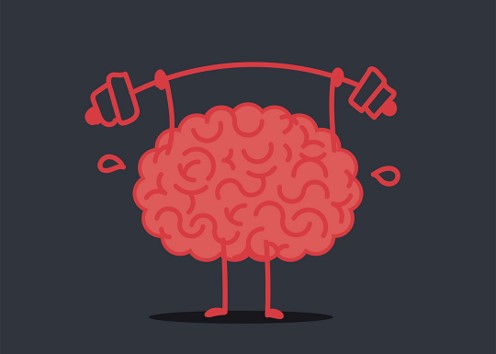By Keshav Narain, M.D.
Part 1: Here is an introduction to neuroprotection, neurogenesis and neuro-regeneration including steps on how to increase your brain and nerve health.

A few years ago, I would play a game on the Nintendo Wii called Big Brain Academy with my younger daughter. It had all kinds of little cognitive and memory games that you could get good at and increase your score which would be displayed as a brain weight. How realistic is this? Can we really increase the volume of our grey matter?

It turns out that brain weight and volume do change. They can decrease with age and disease. But can we slow down or reverse this process? Can we do anything actively to improve our brain and grow more neurons?
If you asked this question to most doctors and scientists twenty years ago, the answer would be “No, because most of our nervous system is completely fixed after reaching adulthood and very little change, other than deterioration, is possible”. We now realize that this was incorrect. The term neural plasticity has become mainstream and the concept has changed our approach to rehabilitation and management of disease.
It turns out that there are a variety of ways that we can favorably alter our brain and nerves. These changes are even evident on imaging such as brain MRI that can show improvements in volume and density of grey matter. Neural plasticity can also facilitate the repair and regeneration of nerves and retina in patients with diseases such as macular degeneration and glaucoma.
The term neuroplasticity refers to the ability of the nervous system to have plasticity and change. Neuroplasticity relies on the capacity of the cell to regenerate and repair nerve function and connections. Regenerative approaches to glaucoma and inherited retinal diseases are under active investigation. We know that many factors contribute to this regenerative capacity that all cells have in the juvenile stage. It turns out that some of these factors are under our control and we can play a role in improving our prognosis for many diseases while maintaining and even increasing our cognitive capacity.
Part 2: “What can you do to grow your brain and nerves?”
Here are steps to increasing your brain and nerve health. (And, by the way, this will benefit glaucoma and retinal patients as well.)
Step 1: Detox. Stop tobacco, stop alcohol (even red wine), stop known neurotoxin including drugs that interfere with hormones, growth factors, or blood flow. (Stop finasteride).
Step 2: Get sleep! Both good quality and quantity are essential for nerve repair and reconditioning each night. Set your displays for night mode. Eliminate the blue light on all screens after 4PM. Treat sleep apnea.
Step 3: Get your cardio! This means at least 30min each day on average. Some say more like an hour, but that can be intimidating. If you don’t do cardio, then even 30 min every other day is going to help.
Step 4: Improve your diet. Without beginning an entire piece on diet, I will emphasize the need to nourish with foods rich in anti-oxidants and vitamins. The best are the dark green leafy vegetables. As we get older, our ability to absorb nutrients decreases and we may need to assist with supplements. Vitamin D, B12, and lutein are sometimes recommended to improve deficiencies in susceptible individuals.
Step 5: Continuous cognitive challenge and problem solving – yes. Using your brain and nervous system improve it. Remember, it is the cognitive challenge. Problem solving and games that force thinking and creativity will stimulate learning. Learning is possible at any age and learning new skills can benefit brain health.
Step 6: Recovery time. Enjoy time for diversion and recreation. Listen to music. Exercise your auditory cortex. Become socially involved and part of a community. Social connection is a critical factor in mental health and well being.
The take home message here is that our bodies, and the cells that make up our bodies can self repair and even regenerate given the right stimulation and conditions. Much like growing a plant, all the conditions have to be right. In the next posting, I will list more medically oriented and therapeutic approaches to turning on your natural regeneration and repair system.
Step 7: Experimental new approaches. Not recommended without physician supervision:
- Methylene blue – Skin age reversal
- 40 Hz sound and light – Amyloid Plaque busting activity
- Metformin for longevity – Reduced mutation rates. Increased longevity.
- SSRI or SNRI medications for neuroprotection – Maintain, increase brain volume.
- Plant alkaloids: curcumin, CBD, THC – US Govt holds patent for neuroprotective applications
- Serotonin receptor ligands: Psilocybin – Clinical trials under way. Known to promote neurogenesis (synaptogenesis) in vitro and in vivo.
